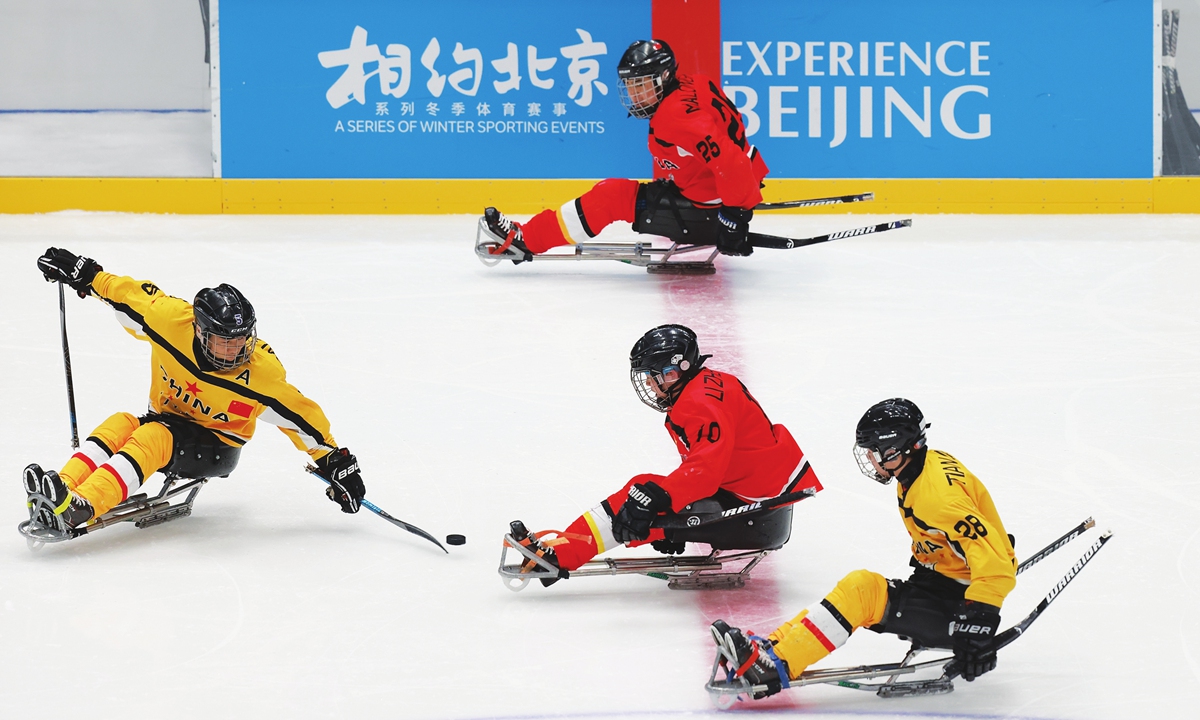
Chinese athletes compete during the Para Ice Hockey test event for the Beijing 2022 Paralympic Winter Games, in Beijing, on April 9, 2021. Photo: VCG
Para ice hockey, a sport of the Winter Paralympic Games, has been attracting many spectators all around the world due to its highly physical nature.
The sport was formally known as sledge hockey that originated in 1960 at a Swedish rehabilitation center and became an official sport in the 1994 Winter Olympic Games at Lillehammer in Norway.
A Para ice hockey competition often involves quickly changing tactics and obvious physical collisions between players that not only makes the game exciting to view, but also its degree of difficulty can go higher than standard ice hockey.
Although Para ice hockey is similar to standard ice hockey that players strive to get their puck into the opponent's goal, it has many major differences when it comes to details.
Players of Para ice hockey use a special type of stick with metal teeth on the tip of their handle that assist players to propel themselves freely on the rink.
China made its international Para ice hockey debut at the 2018 World Championships C-Pool, and Chinese players beat the hosts 5-0 in the last match of the Games in Finland.
Each Para ice hockey team consists of a maximum of 16 players and two goalkeepers. Each team has six players and one goalkeeper on the field. The game is divided into three 15-minute periods, and if the score is tied, extra time will be played.




